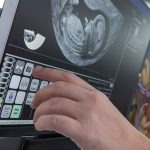Clinical Studies
Clinical studies
Our products have featured in a variety of clinical studies to assess the value of simulation and artificial intelligence in advancing ultrasound.
Simulation-based assessment of upper abdominal ultrasound skills
Ultrasound is a safe and effective diagnostic tool used within several specialties. However, the quality of ultrasound scans relies on sufficiently skilled clinician operators. The aim of this study was to explore the validity of automated assessments of upper abdominal ultrasound skills using an ultrasound simulator.
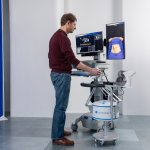
AI-assisted ultrasound-guided regional anaesthesia for trauma patients: a service evaluation
Artificial intelligence (AI) in ultrasound-guided regional anaesthesia (UGRA) has already been proved to support non-experts in identifying key sono-anatomical structures.1 2 We conducted a service evaluation, to assess the impact of an assistive AI device (ScanNav Anatomy Peripheral Nerve Block; Intelligent Ultrasound, Cardiff, UK) on the delivery of UGRA in trauma patients.
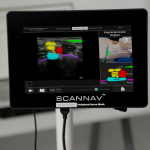
International consensus on anatomical structures to identify on ultrasound for the performance of basic blocks in ultrasound-guided regional anesthesia
James Simeon Bowness, Amit Pawa, Lloyd Turbitt, Boyne Bellew, Nigel Bedforth, David Burckett-St Laurent, Alain Delbos, Nabil Elkassabany, Jenny Ferry, Ben Fox, James L H French, Calum Grant, Ashwani Gupta, William Harrop-Griffiths, Nat Haslam, Helen Higham, Rosemary Hogg, David F Johnston, Rachel Joyce Kearns, Sandra Kopp, Clara Lobo, Sonya McKinlay, Stavros Memtsoudis, Peter Merjavy, Eleni Moka, Madan Narayanan, Samer Narouze, J Alison Noble, David Phillips, Meg Rosenblatt, Amy Sadler, Maria Paz Sebastian, Alasdair Taylor, Athmaja Thottungal, Luis Fernando Valdés-Vilches, Thomas Volk, Simeon West, Morné Wolmarans, Jonathan Womack and James Robert Macfarlane | This study aimed to produce standardized recommendations for core (minimum) structures to identify during seven basic blocks.
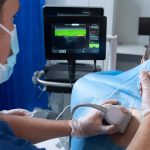
Exploring the utility of assistive artificial intelligence for ultrasound scanning in regional anesthesia
James Simeon Bowness, Kariem El- Boghdadly, Glenn Woodworth, Alison Noble, Helen Higham, David Burckett- St Laurent | This study explores the utility of a novel artificial intelligence (AI) device designed to assist in this task (ScanNav Anatomy Peripheral Nerve Block; ScanNav), which applies a color overlay on real- time ultrasound to highlight key anatomical structures.
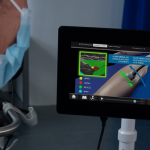
Evaluation of the impact of assistive artificial intelligence on ultrasound scanning for regional anaesthesia
James S. Bowness, Alan J.R. Macfarlane, David Burckett-St Laurent, Catherine Harris, Steve Margetts, Megan Morecroft, David Phillips, Tom Rees, Nick Sleep, Asta Vasalauskaite, Simeon West, J. Alison Noble, Helen Higham | Use of an assistive AI device was associated with improved ultrasound image acquisition and interpretation. Such technology holds potential to augment performance of ultrasound scanning for regional anaesthesia by non-experts, potentially expanding patient access to these techniques.
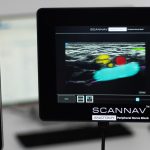
Assistive artificial intelligence for ultrasound image interpretation in regional anaesthesia: an external validation study
James S. Bowness, David Burckett-St Laurent, Nadia Hernandez, Pearse A. Keane, Clara Lobo, Steve Margetts, Eleni Moka, Amit Pawa, Meg Rosenblatt, Nick Sleep, Alasdair Taylor, Glenn Woodworth, Asta Vasalauskaite, J. Alison Noble, Helen Higham | Artificial intelligence-based devices can potentially aid image acquisition and interpretation in ultrasound-guided regional anaesthesia. Further studies are necessary to demonstrate their effectiveness in supporting training and clinical practice.
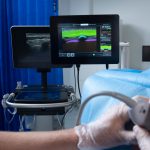
Identifying anatomical structures on ultrasound: assistive artificial intelligence in ultrasound-guided regional anesthesia
James Bowness, Ourania Varsou, Lloyd Turbitt, David Burkett-St Laurent | This investigation evaluates the performance of an assistive artificial intelligence (AI) system in aiding the identification of anatomical structures on ultrasound. Three independent experts in regional anesthesia reviewed 40 ultrasound scans of seven body regions.
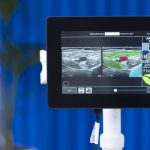
Advanced life support 2.0—Echo-assisted life support (eALS)?
Herman Chih-Heng Chang, Wan-Ching Lien, Wei-Tien Chang, Chien-Hua Huang | A prospective study was conducted from November 2019 to June 2020, and 15 emergency and 8 internal medicine residents of the National Taiwan University Hospital, who had passed the ALS provider course, attended the half-day course including pre-test, didactics, small-group hand-on training (instructor: trainees, 1:3), and post-course assessment.
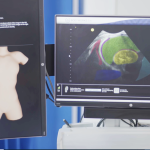
What do end‐users think about simulation in obstetrical and gynaecological ultrasound?
N.J. Hajal, G.E. Chalouhi, V. Bernardi, L.J. Salomon, Y. Ville ScanTrainer | This study sheds light on the importance of the simulation experience in the learning, practicing, and evaluation process of obstetrical and gynecological US. The majority appreciated the realistic images, probe sensation, and its importance as a teaching tool. The simulation experience carried out in […]

Validation of a virtual reality simulator for the use of transvaginal ultrasonography in gynaecology and early pregnancy
Maya Al‐Memar BSc, MRCOG, Srdjan Saso BSc, PhD, MRCOG, MRCS, Shabnam Bobdiwala BSc, MBBS, Lieveke Ameye MSc, PhD, Sharmistha Guha MRCOG, Karen Joash MRCOG ScanTrainer | The objective of this study was to validate a virtual reality simulation ultrasound model as a tool for training in the use of transvaginal ultrasonography in gynaecology and early pregnancy…
